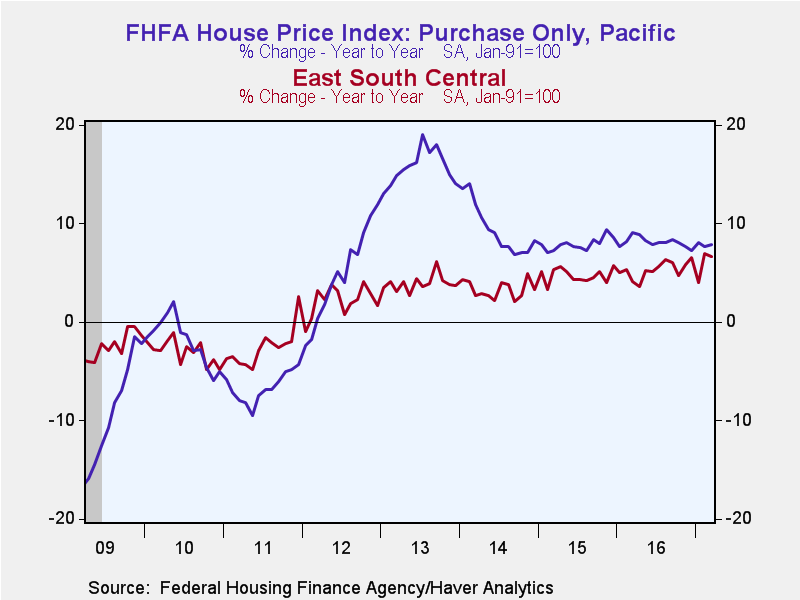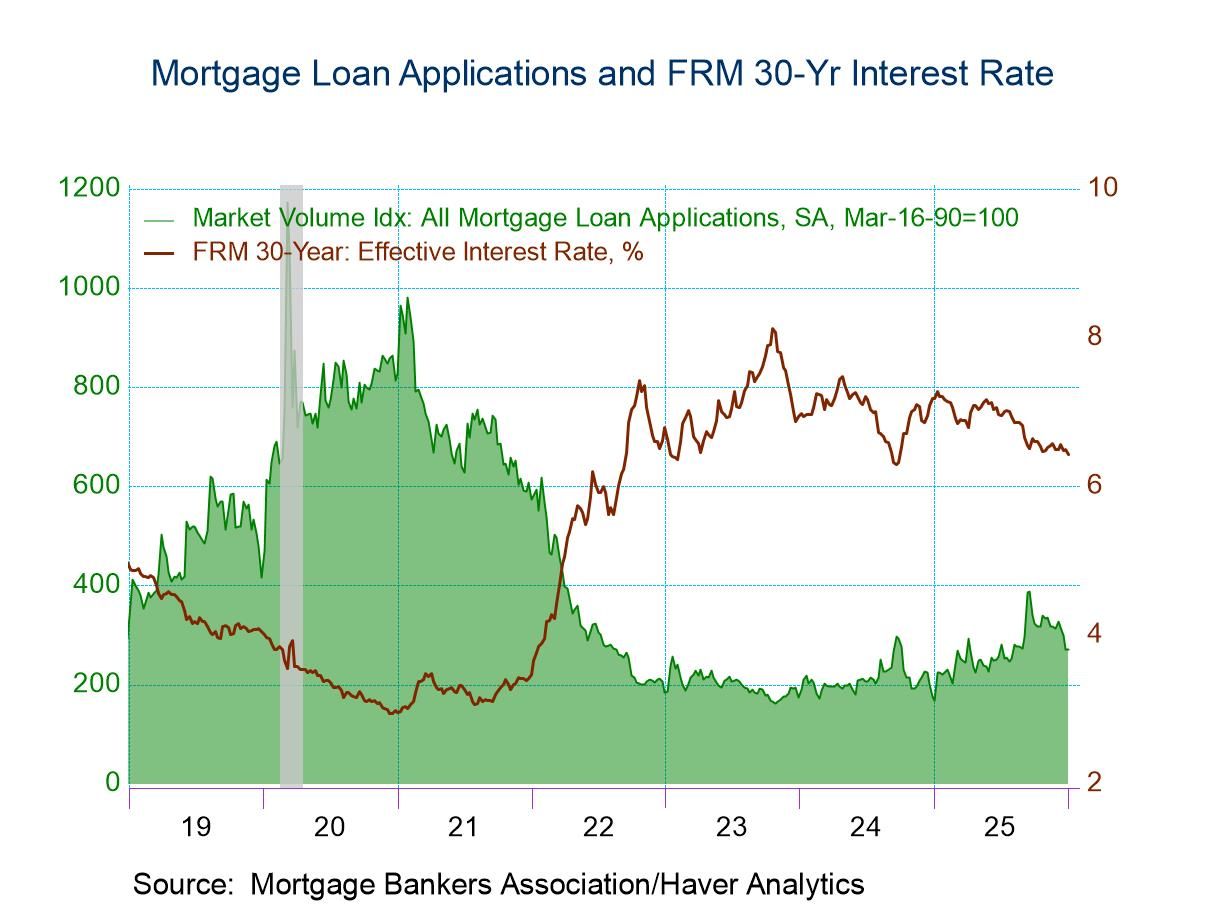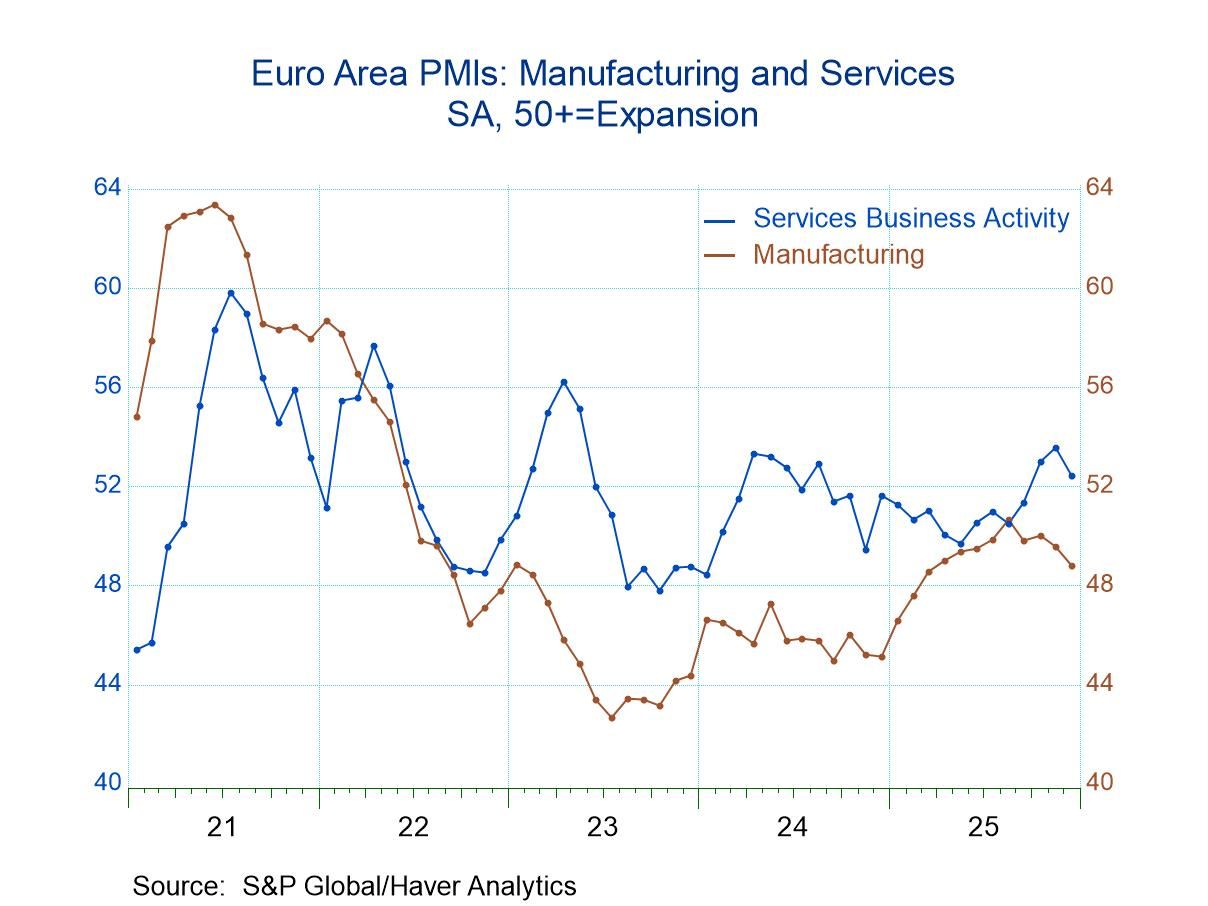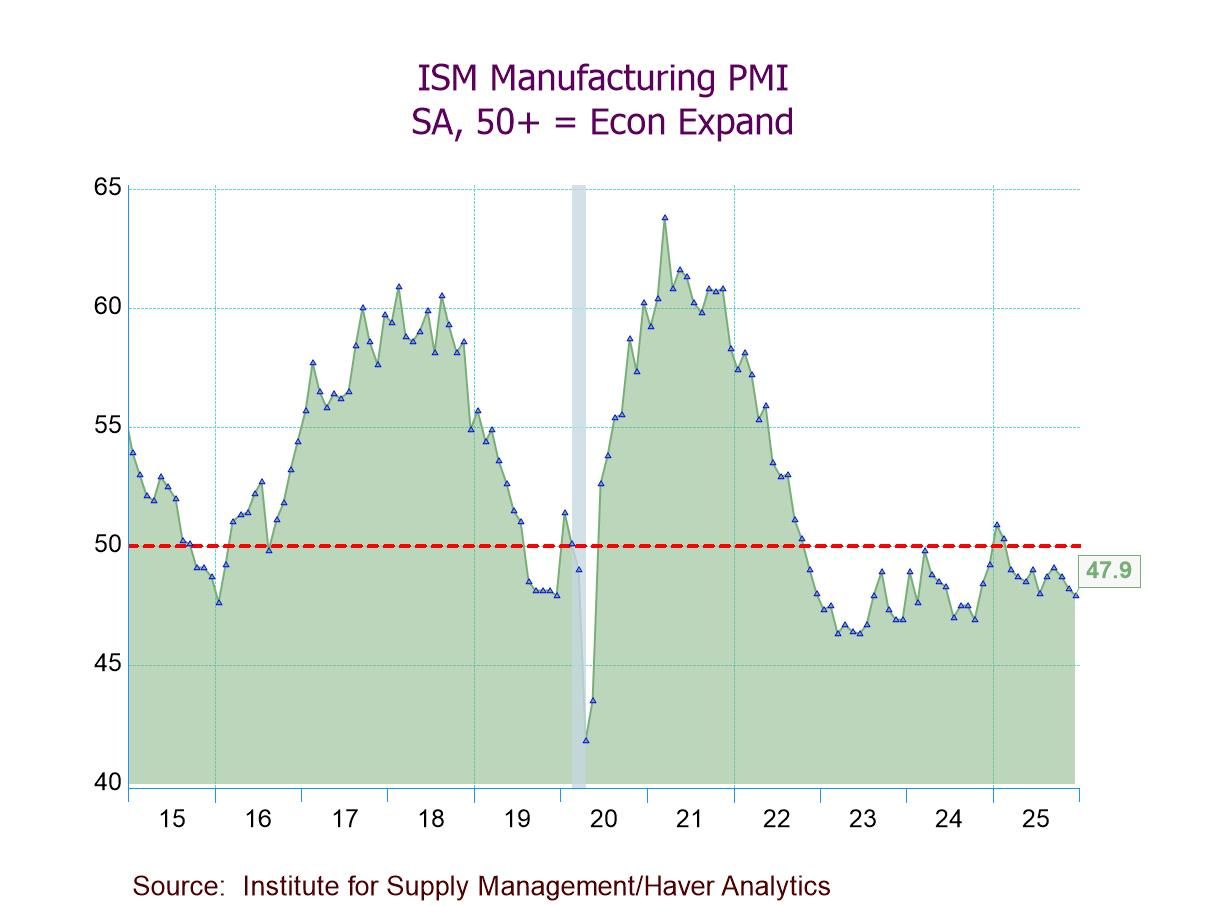 Global| May 24 2017
Global| May 24 2017U.S. FHFA House Price Inflation Is Steady
by:Tom Moeller
|in:Economy in Brief
Summary
The Federal Housing Finance Agency's (FHFA) index of U.S. house prices increased 0.6% during March (6.2% y/y) following an unrevised 0.8% February rise. During the last three months, the 6.5% annualized rate of increase roughly [...]
The Federal Housing Finance Agency's (FHFA) index of U.S. house prices increased 0.6% during March (6.2% y/y) following an unrevised 0.8% February rise. During the last three months, the 6.5% annualized rate of increase roughly equaled last year's 6.2% pace.
The performance of home prices continued to vary greatly around the country. On the strong side were prices in the Pacific region which posted a 1.4% March increase. Its 7.9% y/y gain was the strongest in the country, with the rate of increase accelerating to 10.5% during the last three months. In the South Atlantic region, a 1.0% increase left y/y growth steady at 6.5%, although there's been moderate deceleration recently. Prices in the East North Central region rose 1.0% with upward momentum strengthening.
Home prices rose 0.8% (5.9% y/y) in the West North Central region and the y/y rise has been a steady 5.9%. In the Mountain states, prices increased 0.6% and strength has picked up recently to 7.4% y/y, 8.2% on a three-month basis.
Elsewhere in the country, home prices declined during March. A 0.6% decline in the Middle Atlantic region left the 3.8% y/y gain as the weakest in the country. In the East South Central region, prices declined by 0.3%, but y/y growth of 6.7% was near the high end of the range. In the West South Central region, prices eased 0.2% and y/y growth of 5.3% was near the low end of the range. Prices in the New England ticked 0.1% lower, but y/y growth recently picked up to 6.0%, a pace sustained in recent months.
The FHFA house price index is a weighted repeat sales index, measuring average price changes in repeat sales of the same property. An associated quarterly index also includes refinancings on the same kinds of properties. The indexes are based on transactions involving conforming, conventional mortgages purchased or securitized by Fannie Mae or Freddie Mac. Only mortgage transactions on single-family properties are included. The FHFA data are available in Haver's USECON database.
The minutes to the latest FOMC meeting are available here.
| FHFA U.S. House Price Index, Purchase Only (SA %) | Mar | Feb | Jan | Mar Y/Y | 2016 | 2015 | 2014 |
|---|---|---|---|---|---|---|---|
| Total | 0.6 | 0.8 | 0.2 | 6.2 | 6.2 | 5.6 | 5.4 |
| Pacific | 1.4 | 0.4 | 0.7 | 7.9 | 8.1 | 8.0 | 9.4 |
| Mountain | 0.6 | 1.0 | 0.4 | 7.4 | 8.0 | 7.9 | 7.2 |
| East South Central | -0.3 | 2.2 | -1.1 | 6.7 | 5.3 | 4.8 | 3.5 |
| South Atlantic | 1.0 | -0.1 | 0.3 | 6.5 | 7.2 | 6.5 | 5.8 |
| East North Central | 1.0 | 0.8 | -0.0 | 6.2 | 5.4 | 4.5 | 4.5 |
| New England | -0.1 | 2.2 | 0.1 | 6.0 | 4.0 | 3.6 | 3.1 |
| West North Central | 0.8 | 0.5 | 0.1 | 5.9 | 5.7 | 4.3 | 4.1 |
| West South Central | -0.2 | 1.2 | 0.4 | 5.3 | 6.1 | 6.4 | 5.6 |
| Middle Atlantic | -0.6 | 1.6 | -0.1 | 3.8 | 3.5 | 2.7 | 2.2 |
|
|
Tom Moeller
AuthorMore in Author Profile »Prior to joining Haver Analytics in 2000, Mr. Moeller worked as the Economist at Chancellor Capital Management from 1985 to 1999. There, he developed comprehensive economic forecasts and interpreted economic data for equity and fixed income portfolio managers. Also at Chancellor, Mr. Moeller worked as an equity analyst and was responsible for researching and rating companies in the economically sensitive automobile and housing industries for investment in Chancellor’s equity portfolio. Prior to joining Chancellor, Mr. Moeller was an Economist at Citibank from 1979 to 1984. He also analyzed pricing behavior in the metals industry for the Council on Wage and Price Stability in Washington, D.C. In 1999, Mr. Moeller received the award for most accurate forecast from the Forecasters' Club of New York. From 1990 to 1992 he was President of the New York Association for Business Economists. Mr. Moeller earned an M.B.A. in Finance from Fordham University, where he graduated in 1987. He holds a Bachelor of Arts in Economics from George Washington University.










